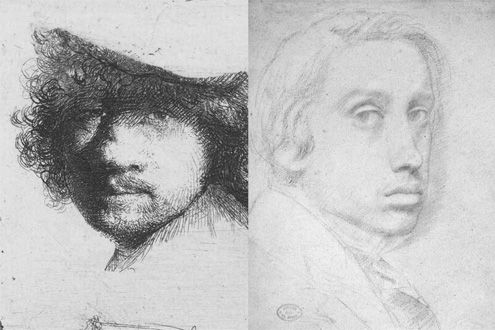ARTES PLÁSTICAS
OFICINA DE GRAVURA EM METAL
Coordenação: Maura de Andrade.
17/4 a 26/6 – terças-feiras – 18h30 às 21h30.
Público: estudantes de artes visuais, artistas plásticos e interessados com conhecimento prévio.
Inscrições: 2 a 12/4.
Seleção: carta de interesse.
20 vagas.
Atividade que visa desenvolver técnicas de gravura em metal a partir de fundamentos teóricos e da exploração prática de interações de procedimentos diretos – ponta-seca, buril, roulette, berceau – e indiretos – água-tinta e água-forte.
Maura de Andrade é graduada pelo Centro Universitário Belas Artes e mestranda na ECA-USP em Poéticas Visuais, com orientação de Claudio Mubarac. Em 2010 foi premiada na Bienal de Gravura de Santo André e seus trabalhos fazem parte de acervos nacionais e internacionais.
OFICINA DE DESENHO E PINTURA
Coordenação: Hélio Schonmann.
25/04 a 04/07 – quartas-feiras – 18h30 às 21h30.
Público: estudantes de artes visuais, artistas plásticos e demais interessados.
Inscrições: 2 a 20/4.
Seleção: primeiros inscritos.
20 vagas.
Oficina focada na prática de desenho e pintura e na reflexão sobre essas linguagens e seus desdobramentos no cotidiano da cidade. O trabalho parte da complexidade plástica e simbólica do espaço urbano como estímulo para a produção realizada em aula.
Hélio Schonmann é artista plástico e professor. Frequentou os ateliês de Raphael Galvez, Antônio Cabral e Antonio Carelli, bem como o Ateliê de Livre Criação em Artes Plásticas do Museu Lasar Segall, onde posteriormente se tornou orientador. É autor do projeto "Itinerância SP" e participa do Coletivo Água Branca, que realiza projetos de arte pública coletiva na cidade de São Paulo.
GRUPO DE ESTUDOS PARA JOVENS ARTISTAS
Coordenação: Bruno Moreschi e Márcia Moraes.
26/04 a 05/07 – quintas-feiras - 18h30 às 21h30.
Público: estudantes de artes visuais e jovens artistas em processo de formação, a partir de 18 anos.
Inscrições: 2 a 20/4.
Seleção: portfólio (entregue em CD na Oficina Cultural ou enviado para o e-mail: nucleojovensartistas@gmail.com).
15 vagas.
No Grupo de Estudos, os jovens artistas poderão apresentar seus trabalhos e analisar, em conjunto, as obras dos demais participantes, compartilhando experiências e referências que possam enriquecer suas produções artísticas.
Bruno Moreschi é jornalista formado na Universidade Federal de Santa Catarina, artista plástico e crítico de arte. Escreve para publicações como "Piauí" e "Bravo!".
Márcia Moraes é mestre em Artes Plásticas pela Unicamp. Realizou exposições individuais no Centro Universitário Maria Antonia, em 2009, e na Galeria Leme, em 2010. Recentemente, fez residência artística na cidade de La Roche-en-Brenil, França.
WORKSHOP DE GRAVURA: PUBLICAÇÃO DE ARTISTA
Coordenação: Cleiri Cardoso.
4 a 27/6 – segundas e quartas-feiras – 18h30 às 21h30.
Público: estudantes de artes visuais, artistas plásticos e demais interessados.
Inscrições: 2 a 31/5.
Seleção: primeiros inscritos.
20 vagas.
Atividade que visa estimular experimentos com gravura em relevo – carimbos, xilogravura e linoleogravura – objetivando a criação e edição de uma publicação de arte elaborada coletivamente, considerando o formato livro como suporte.
Cleiri Cardoso é artista visual e educadora, licenciada em Artes Visuais pela FAP-PR e mestranda em Poéticas Visuais pela ECA-USP. Pesquisa e desenvolve trabalhos sobre a imagem impressa, publicações e livros de artista. Orientou atividades no ateliê de gravura do Sesc Pompeia de 2006 a 2010 e atualmente ministra cursos relacionados aos meios de reprodução de imagens.








